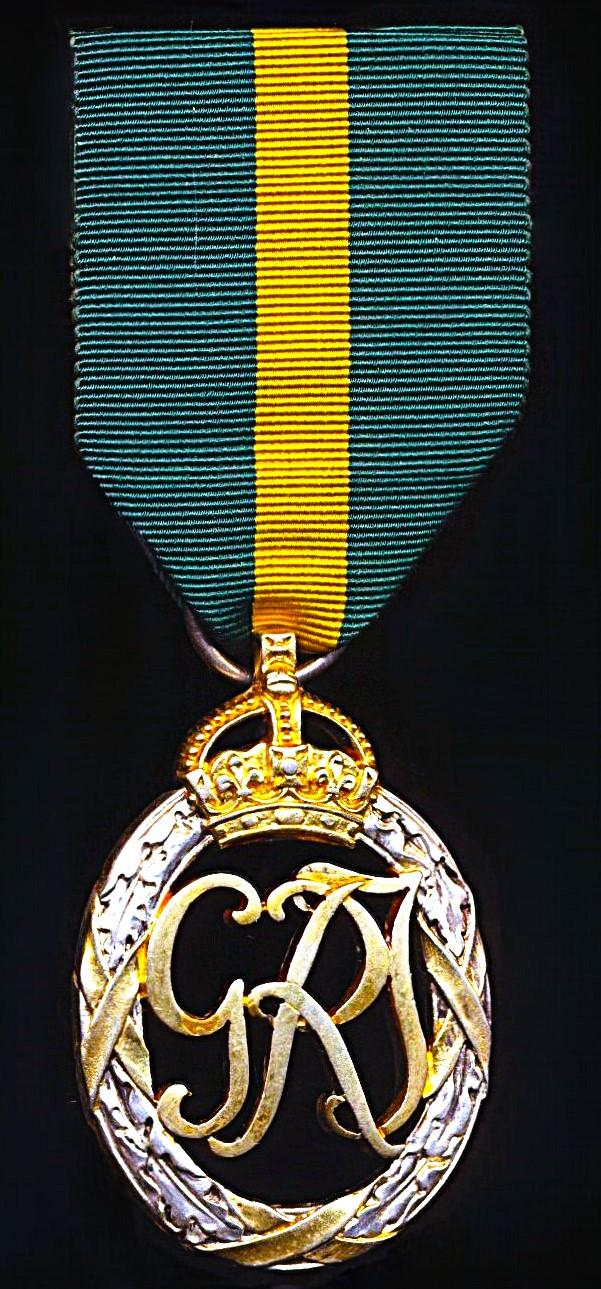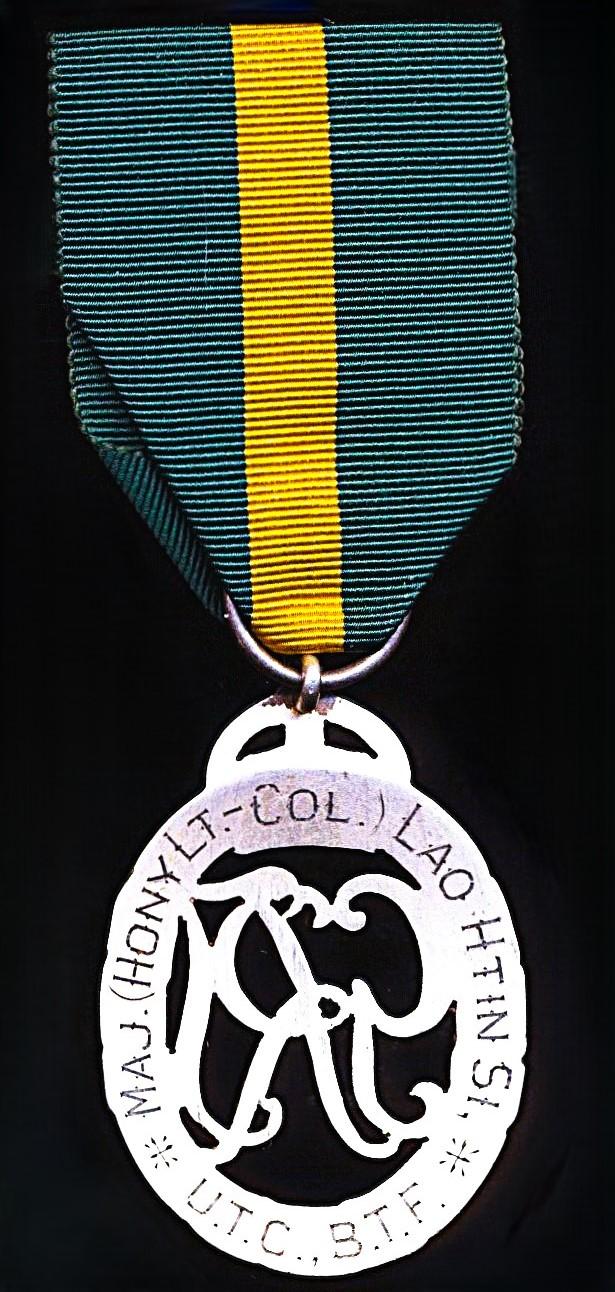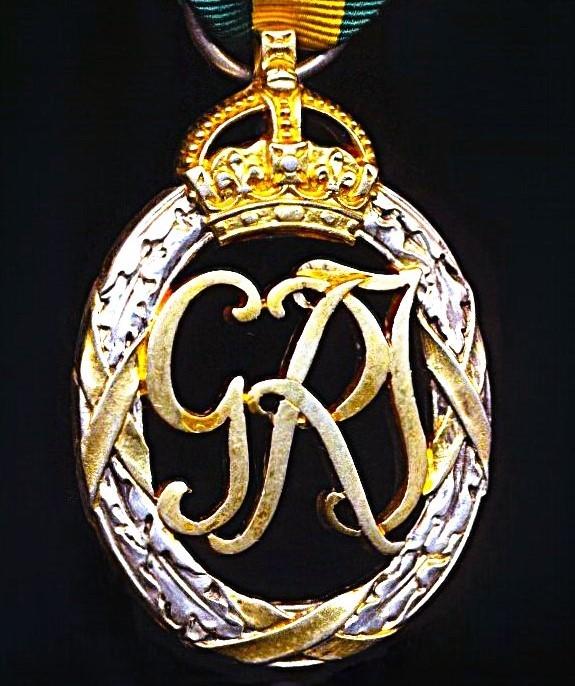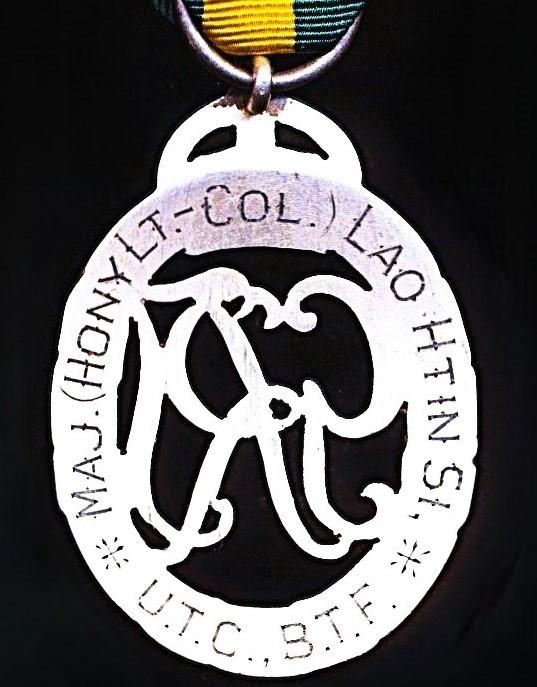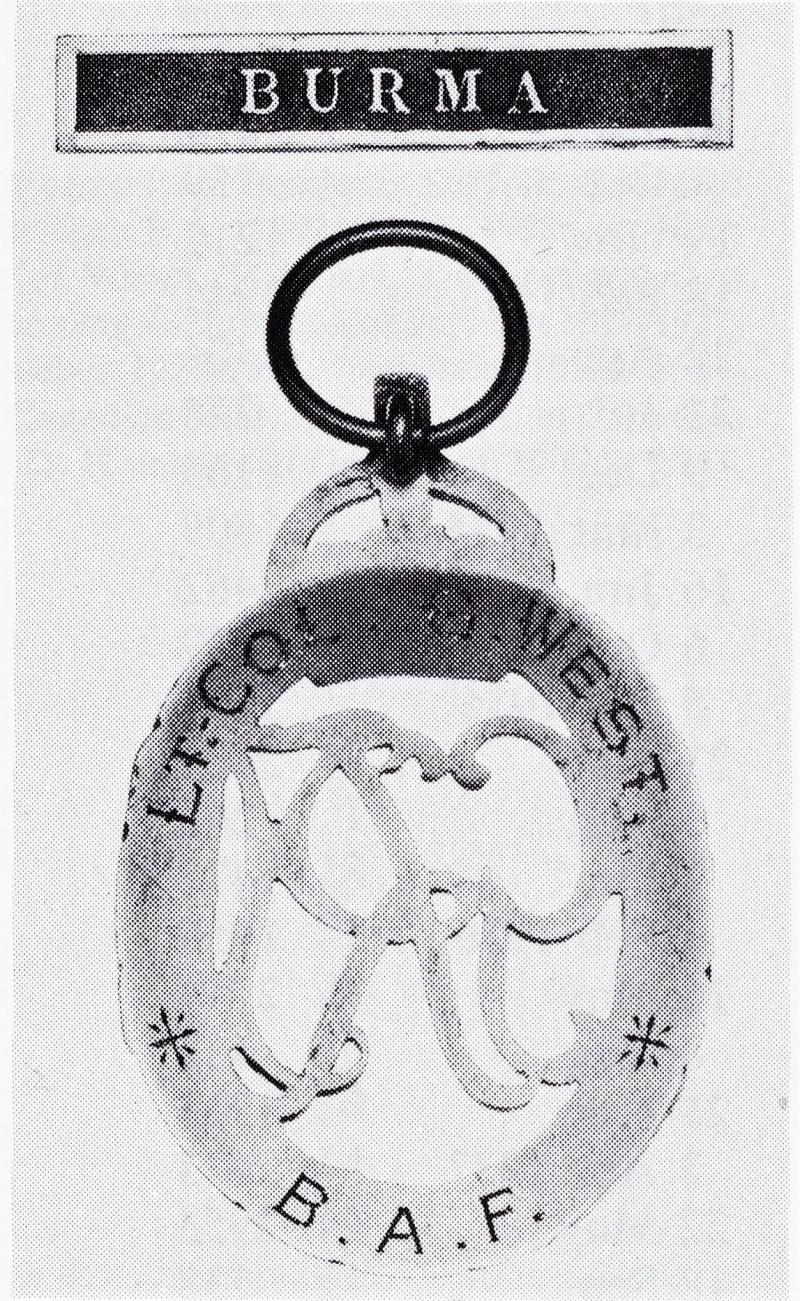Efficiency Decoration. GVI first issue (Maj. (Hony Lt-Col). Lao Htin Si, U.T.C. B.T.F.)
Sans 'Burma' top integral bar
Officially engraved naming in the style commonly seen on Efficiency Decorations 'Burma' (we have handled the medals to recipients McReadie and West)
Reference 'The Efficiency Decoration Instituted 1930' (John Tamplin, 1987) the author 'then' had records of only an estimated 16 x gazetted awards of the GVI issue Efficiency Decoration with integral top bar 'Burma', all to British and or Eurasian recipients only
The recipient was Major (Honorary Lieutenant-Colonel.) Lao Htin Si, University Training Corps, Burma Territorial Force
In addition to the Efficiency Decoration, Major Lao Htin Si, is known to have been entitled to the below following Second World War campaign medals:
- The 1939-1945 Star. No clasp
- The Burma Star. No clasp
- Defence Medal
- War Medal
The Indian Territorial Force (for indigenous ethnic volunteers) created in 1920, embarked the following year on the creation of a University based Officer Training Corps across selected university colleges in British India (including Burma). The first OTC battalions were created in 1921. In Burma the only Officer Training Corps unit in 1930, was styled the 6th (Burma) Battalion University Training Corps (Indian Territorial Force), and had been constituted on 5 August 1921. The Indian Army List entry for the unit in 1930, records Send-Lieutenant Lao Htin Si as one of the four 'Company Commanders', with date of 1st commission shown as effective from 1 September 1928. By the time of the October 1936 Indian Army List, Lao Htin Si is still shown as serving with the but by then holding the rank of Lieutenant, having been promoted to that rank with pay from 1 April 1929
By 1941, Lao Htin Si held the position of Registrar of Rangoon University. Reference the Civil List for Burma (in exile) dated 1 September 1942, he is shown that Lieutenant-Colonel Lao Htin of the Army in Burma Reserve of Officers - holding the honorary appointment of Aide-de-Camp to the Governor of Burma, with effect from 6 May 1941. Lao Htin Si was mobilized for 'War Service' during the Second World War, and was amongst the British Empire Forces that withdrew from Burma in 1942 following the Japanese invasion and defeat of the British Forces there in 1941-42 (evacuation records show his wife and two daughters, formerly resident at Rangoon, were fortunate enough to survive the evacuation ordeal, and in 1942 were shown living India). Shortly after his arrival in British India, the Officers of the Burma Territorial Force were mostly transferred for service with the British Indian Army, and or the imperial British Armed Forces. Indian Army Lists of the Second World Years record that Lao Htin Si served in India as an attached officer from the A.B.R.O., with appointments in the Indian Army's Directorate of Public Relations which would have been in keeping with his academic and University Training Corps background and training. Major (Honorary Lieutenant-Colonel) Lao Htin Si survived the Second War, and presumably was awarded the Efficiency Decoration sometime after August 1945, and prior to Burmese Independence in 1948. He died in Burma on 14 May 1970
Lao Htin Si was a long standing Freemason, and latterly held the senior Freemason appointment of Deputy Grandmaster of the Leeson Chapter Rose Croix in Rangoon, Burma. During his tenure as Deputy Grandmaster, Lao Htin Si, is recorded to have maintained a good working relationship with the Burmese Military Dictator Ne Win, the Southgate Masonic Centre, London, records refer:
Quote,
The political situation in Burma proved difficult for all associations and societies after General Ne Win came to power in 1962 and installed a military revolutionary council. Freemasonry was fortunate to have as the District Grand Master Bro. Lao Htin Si, also a member of Leeson, he was well known and respected by Ne Win, and meetings were able to continue with some normality, due to his standing with the authorities. However, the DGM. died on the 14th May 1970 and it was clear that Freemasonry would soon go the way of such groups as the Scouts, the Lions and other clubs and associations in being prohibited.
Unquote.
The lodge of the Leeson Chapter Rose Croix in Rangoon, Burma, closed and was transferred to London, England, where the first meeting of the lodge was held on 29 November 1972
the
The sale is for the medal with riband named to Lao Htin Si, and does not not include the medal and Burma bar to West, which latter image has only here been included for illustration comparison purposes
Extremely rare - quite possibly unique - un-recorded award to a most interesting Burmese recipient
Condition: GVF
Code: 25180



